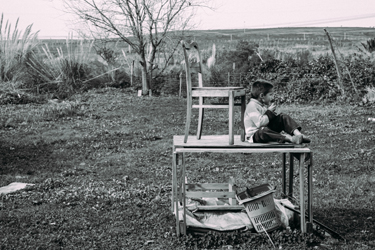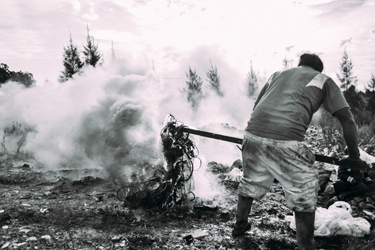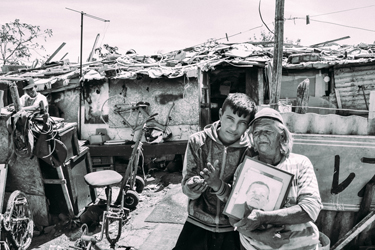Fieldwork in Uruguay


 My research focuses on the lives of informal waste recyclers (clasificadores) who live in and around Montevideo’s municipal dump of Felipe Cardoso. For generations, dozens of clasificadores have lived next to the landfill, which they refer to as ‘the mother’ since she provides materials to sell (plastics, paper, metals) as well as food, clothing and household items.
My research focuses on the lives of informal waste recyclers (clasificadores) who live in and around Montevideo’s municipal dump of Felipe Cardoso. For generations, dozens of clasificadores have lived next to the landfill, which they refer to as ‘the mother’ since she provides materials to sell (plastics, paper, metals) as well as food, clothing and household items.
Living in a rural housing cooperative in front of Felipe Cardoso composed of many recyclers; I looked at the symbolic and material importance of the dump in their lives. Fieldwork was conducted at various sites related to the politics and economics of the waste sector: the landfill itself, a recycling cooperative turned municipal plant, the municipal waste laboratory and with the clasificador trade union.
The recycling industry in Uruguay relies on a dynamic symbiosis between the informal and formal sectors, where informal clasificadores are seen to be the first and weakest link in a chain which feeds formal-sector profits. Clasificadores like Selva have returned thousands of tons of material to the productive economy without earning a dignified pension to be able to retire. Clasificadores today stand at the crossroads of potentially lucrative but unprotected waste work in the informal sector and a precarious inclusion into the formal economy.
From top right:
My neighbour Alejandro enjoys a contemplative moment in our garden.The hill in the background is Felipe Cardoso: is grassed over to the right and still an active landfill on the left. Ale’s father works recycling with his family on squatted land near the dump.
My neighbor Juan extracts copper by burning plastic cables recovered from the dump, while his son watches on. Copper is the most lucrative of all materials recovered by clasificadores but is still subject to fluctuations in the international materials markets. Such wire is worth five times more if it is sold without its plastic casing but the result is often environmental contamination.
‘Old’ Selva stands with her grandson and a picture of her own grandmother in front of her home. Selva started working in Montevideo’s dumps when she was 26 and, now in her 70s, lives in the first ‘rancho’ of the Felipe Cardoso informal settlement. She stills works clasificando and believes that her stern grandmother, who came to Uruguay from Cataluña in the early 20th century, would have sorted out her own idle grandson in no time.
